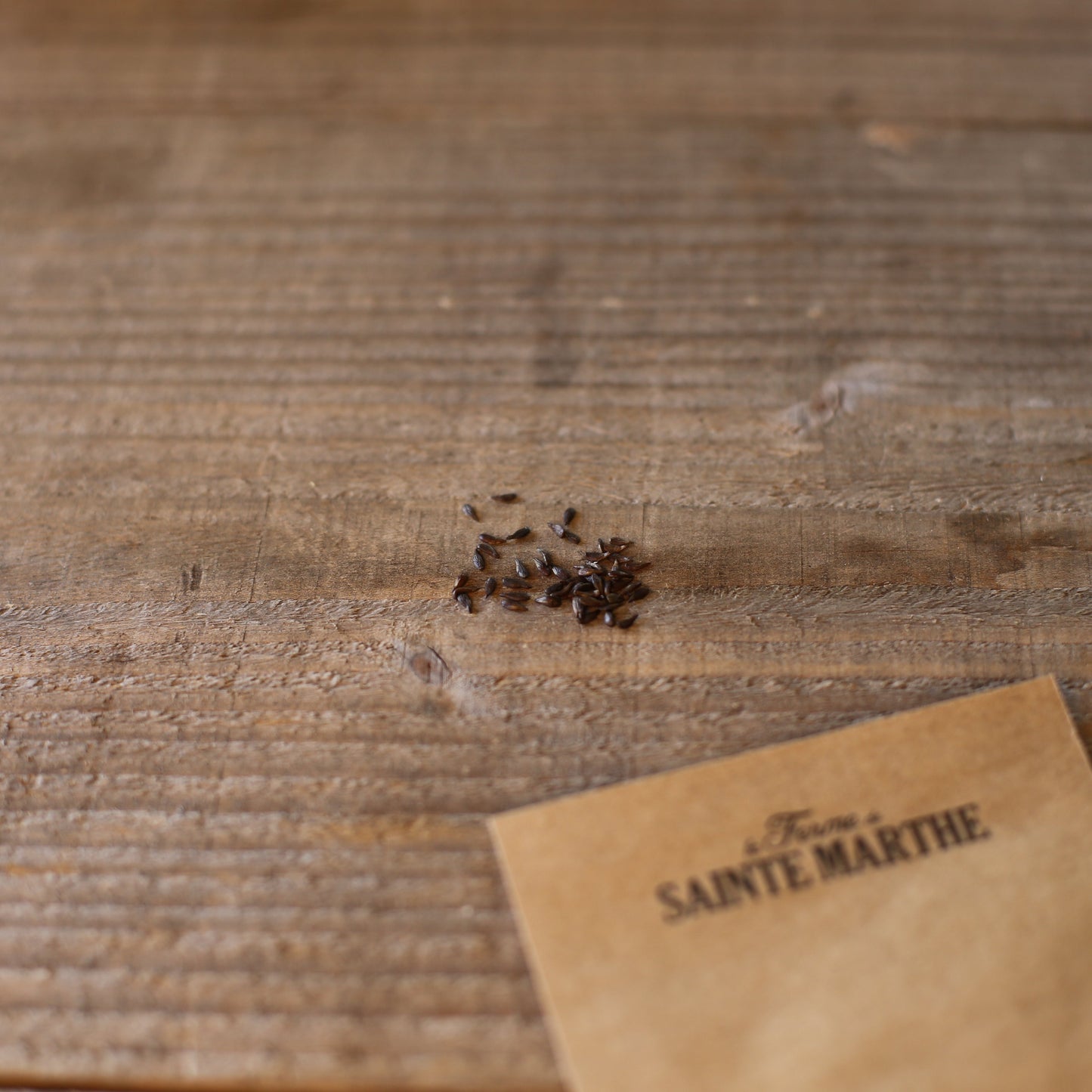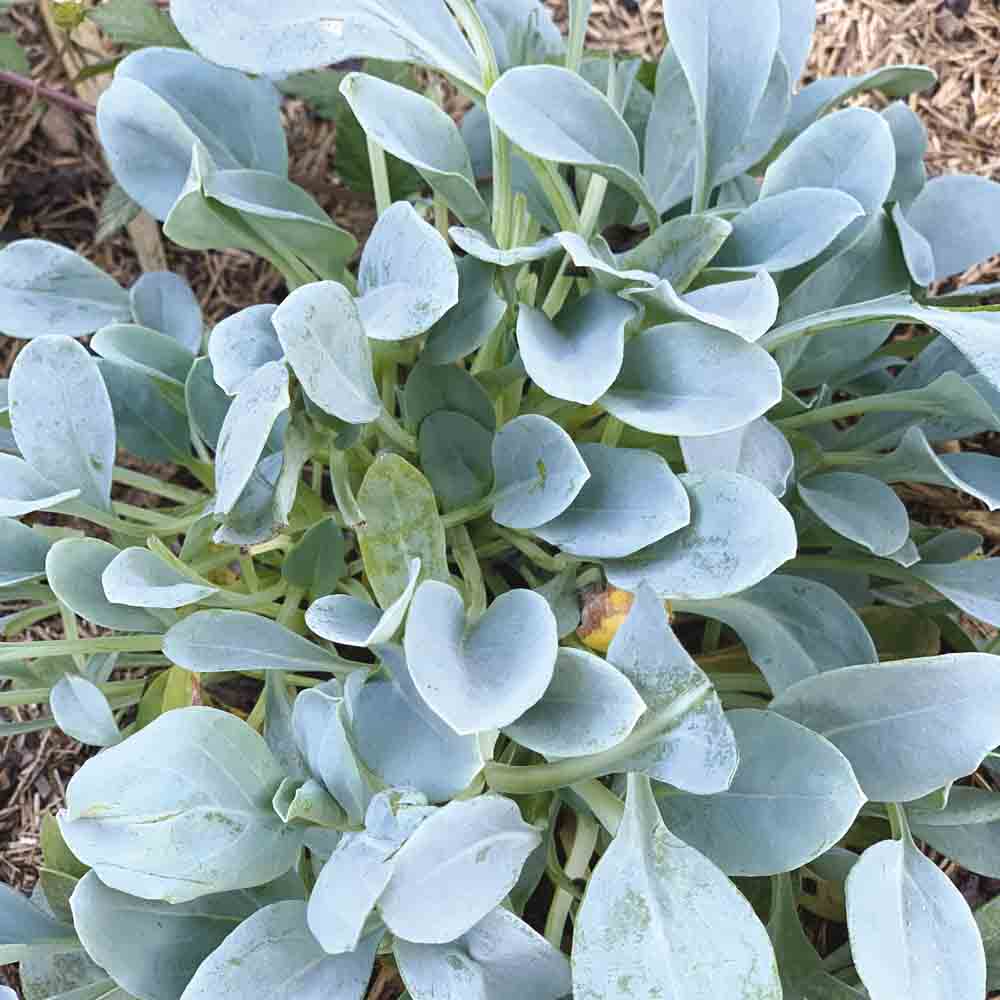MERTENSIA MARITIMA OR NT OYSTER PLANT
Mertensia maritima
The oyster plant is part of a botanical genus where all plants have more or less salty-tasting leaves.
Mertensia maritima, also known as sea oysterwort, Virginia lungwort, sea bloodroot, and vegetable oyster, is the species with the closest flavor to oysters. It's truly surprising!
Of course edible, mertensia is highly prized by top chefs. It is most often used raw to bring out its full flavor, in: fish dishes, salads, pesto, vinegar (like samphire).
An endangered but adaptable plant
Mertensia maritima has disappeared from the Normandy landscape due to over-harvesting.
However, it grows very well in gardens as long as overwatering is avoided. It is highly resistant to wind and drought.
It is a hardy perennial plant (-25°C) that will remain in place for several years. Its foliage is deciduous, so it will lose its leaves in winter and start growing again in spring.
Successful Sowing of Mertensia maritima
Period: August/September or February/March at 15-20°C.
Preparation: store the seeds in the cold for 1 month (refrigerator).
Germination: very long and irregular (around 20 days), patience required! Don't throw away your seed tray too quickly.
Substrate: mixture of potting soil and draining sand, cover the seeds very lightly.
Conditions: Keep soil moist but not soggy, away from direct sunlight.
After germination: Keep young plants away from frost and in a cool place. Repot in a pot with a mixture of 50% potting soil and 50% sea sand, with a drainage layer at the bottom of the pot.
Planting and Cultivation of Mertensia maritima
Support: In a pot or directly in the ground. Mixture of 50% sand / 50% garden soil.
Exposure: partial shade.
Spacing: 60 cm between each plant.
Watering: Keep the soil moist but not soggy.
Tips for Culture
Be careful with excess water!
In rainy regions, it is best to grow it in a pot to better protect it.
For growing in pots, keep the soil always fresh but not soggy and place it in partial shade.
In the fall, bring the pot into a cold greenhouse or a not-too-heated veranda.
Life cycle :
Deciduous plant, it is normal for the leaves to turn yellow and disappear in winter.
The root part will survive if the soil is well drained and will start growing again in the spring.
Main risk: watch out for slugs!
Harvesting Mertensia
Mertensia maritima leaves are fragile and oxidize quickly, so it's best to harvest them as needed.









